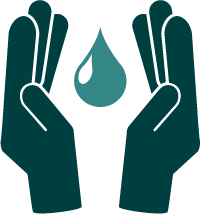Water-related disasters are affecting more and more people around the globe every year and 2018 will be no exception. Around 90% of the world’s disasters are water-related, including floods, droughts, hurricanes, storm surges and landslides. To face these growing threats, we need to create and manage adaptation measures to build an international community that has the capabilities to face a constantly changing environment.
According to UN Water, water-related disasters have two different impacts on human life:
- Direct impacts: Damaging constructions, infrastructure, crops and loss of lives and properties
- Indirect impacts: Losses in productivity and livelihoods, increased investment risk, indebtedness and human health impacts.
Even the more developed world is facing severe water-related problems. Paris, the city of lights, is suffering the consequences of its heaviest rainfall in 50 years. The famous River Seine has peaked at about four meters above its normal water level to 5.84 meters, and since last week, nearly 1,500 people have been evacuated from their homes due to the high risk of a major flood. The rising levels of the river have affected walkways and bridges, stopped the circulation of tourist boats and caused the closure of several metro stations. The current plight of Paris is a prime example of how water-related disasters can cause a major shutdown in a developed city.


Improved management of freshwater ecosystems like wetlands to increase resilience and mitigate natural disasters.

Investments in modern flood forecasting, effective early warning systems that reach local communities and information sharing across national boundaries to save lives and avoid economic losses.

Cost reduction of rehabilitation after disasters by investing more in risk mitigation, preparedness, response, and recovery.
At Primal we are reducing and optimizing the use of water at our plantations:

Using a precision irrigation system and investing in the construction of our eco-dam, which has a holding capacity of over one million square meters of water and a bleeder to regulate the water flow, we are securing the valuable resource for us and our projects in a sustainable manner.

Utilizing dry coconut palms and shells to protect and prepare our soils, we are able to improve water retention and maintain the growth of our crops during the dry season in Brazil.

Avoiding the use of unsustainable energy sources wherever possible, such as the energy from the Brazilian national grid, by producing renewable energy with our solar panels and our own Zero Carbon Footprint Plan.
Implementing modern infrastructure and using technological resources to create sustainable solutions will allow us to fight climate change, avoid water-related disasters and efficiently utilize the world’s most vital resource: water.